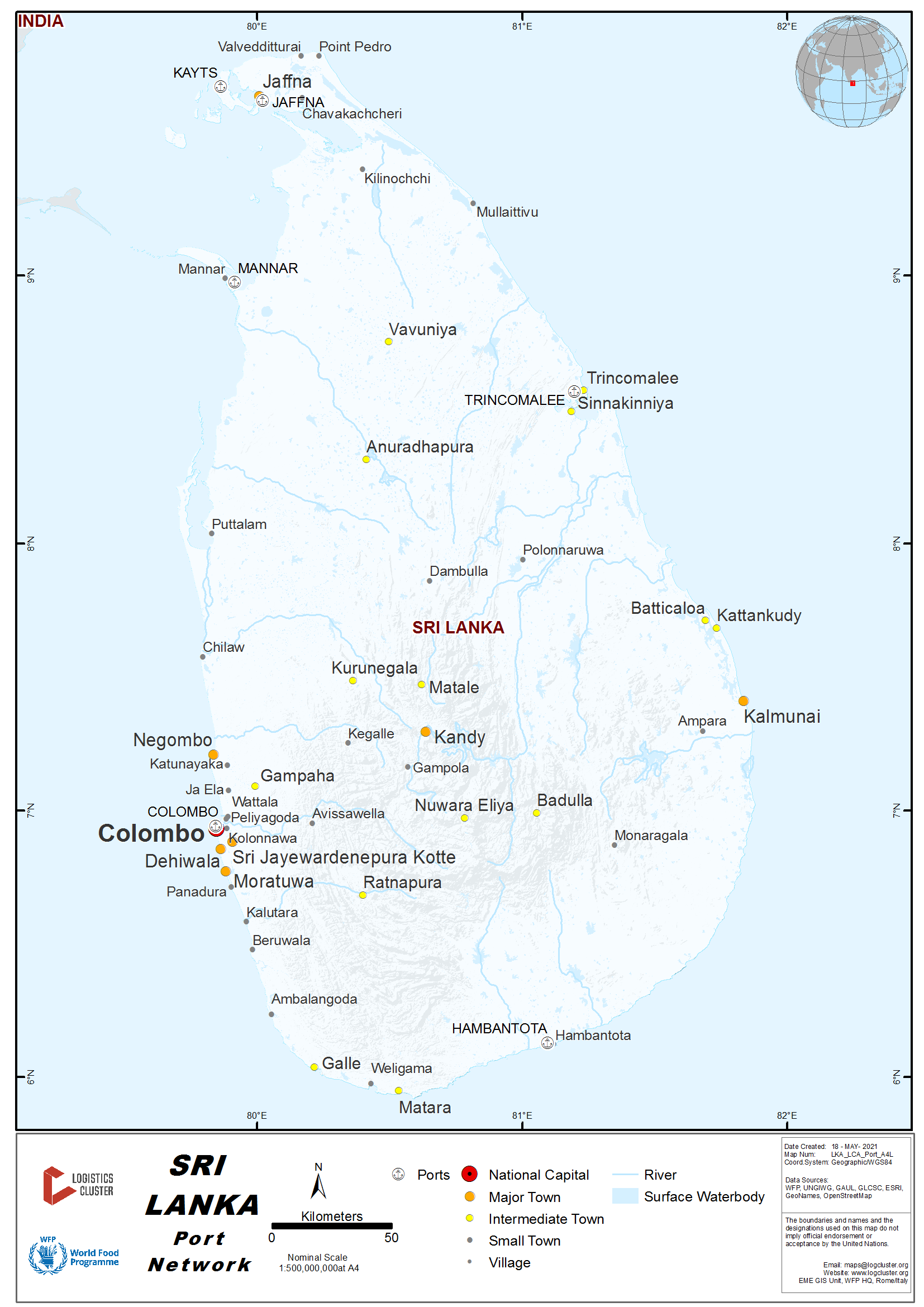Sri Lanka - 2.1 Port Assessment
Overview
Strategically positioned at the heart of the Indian Ocean, Sri Lanka serves as a key player in global maritime trade due to its proximity to some of the world’s busiest shipping routes. Surrounded by the Bay of Bengal and the Arabian sea, it is widely acknowledged as one of the vital nodes along the maritime Silk Road and functions as the gateway connecting South Asia, Southeast Asia, the Middle East, and Africa. Such a distinct locational advantage has transformed the country into a key shipping centre and logistics hub in South Asia. Despite Sri Lanka’s worrying debt situation, they are gearing up to become a regional hub and many other countries are turning to port development to accommodate growing volumes of shipping.
Sri Lanka possesses a well-developed and extensive port network that plays a vital role in the country’s logistics industry and economic sector. The following are Sri Lanka’s major ports that strategically positioned along the country’s coastline:
|
Port Name |
Location |
Description |
|---|---|---|
|
Colombo Port |
Colombo |
Largest port in the country |
|
Hambantota International Port (HIP) |
Hambantota |
Port in the south of the country |
|
Trincomalee Port |
Trincomalee |
5th largest natural harbor in the world |
|
Galle Port |
Galle |
Oldest port in the country |
|
Kankesanthurai (KKS) Port |
Kankesanthurai |
Port serving naval and commercial operations in the north |
|
Oluvil Port |
Oluvil |
Harbor inaugurated in 2013 |
Sri Lanka Ports Authority (SLPA) is the governing body in the Sri Lankan Maritime Sector, which was constituted under the provisions of the Sri Lanka Ports Authority Act, No. 51 of 1979 (subsequently amended by Act No. 7 of 1984 and Act No. 35 of 1984) on the 1st of August 1979, effecting the merger of the Colombo Port Commission Department and the two existing statutory corporations. This resulted in a unified organization with a streamlined structure. SLPA is empowered to develop maintain, operate, and provide port & other services in the ports of Colombo, Galle, Trincomalee, Hambantota and any other port. The SLPA does not receive financial allocations from the government but operates on its own revenue and resources.
Despite the challenges posed by the 2022 economic crisis, Sri Lanka's ports operated continuously and performed relatively well. The country's two main ports, Colombo Port and Hambantota International Port, both recorded increases in container traffic during the first half of 2022. Colombo Port managed to maintain a high level of container flow, and Hambantota International Port has also witnessed an increase in container traffic, and there are plans to further develop the port as a regional hub for transhipment. The sustained growth of these ports can be attributed partially to Sri Lanka’s strategic location as a cargo transit hub in the region. However, there are concerns about the Port of Colombo's capacity due to the delay in constructing infrastructure, which has resulted in a slower growth rate than expected.
